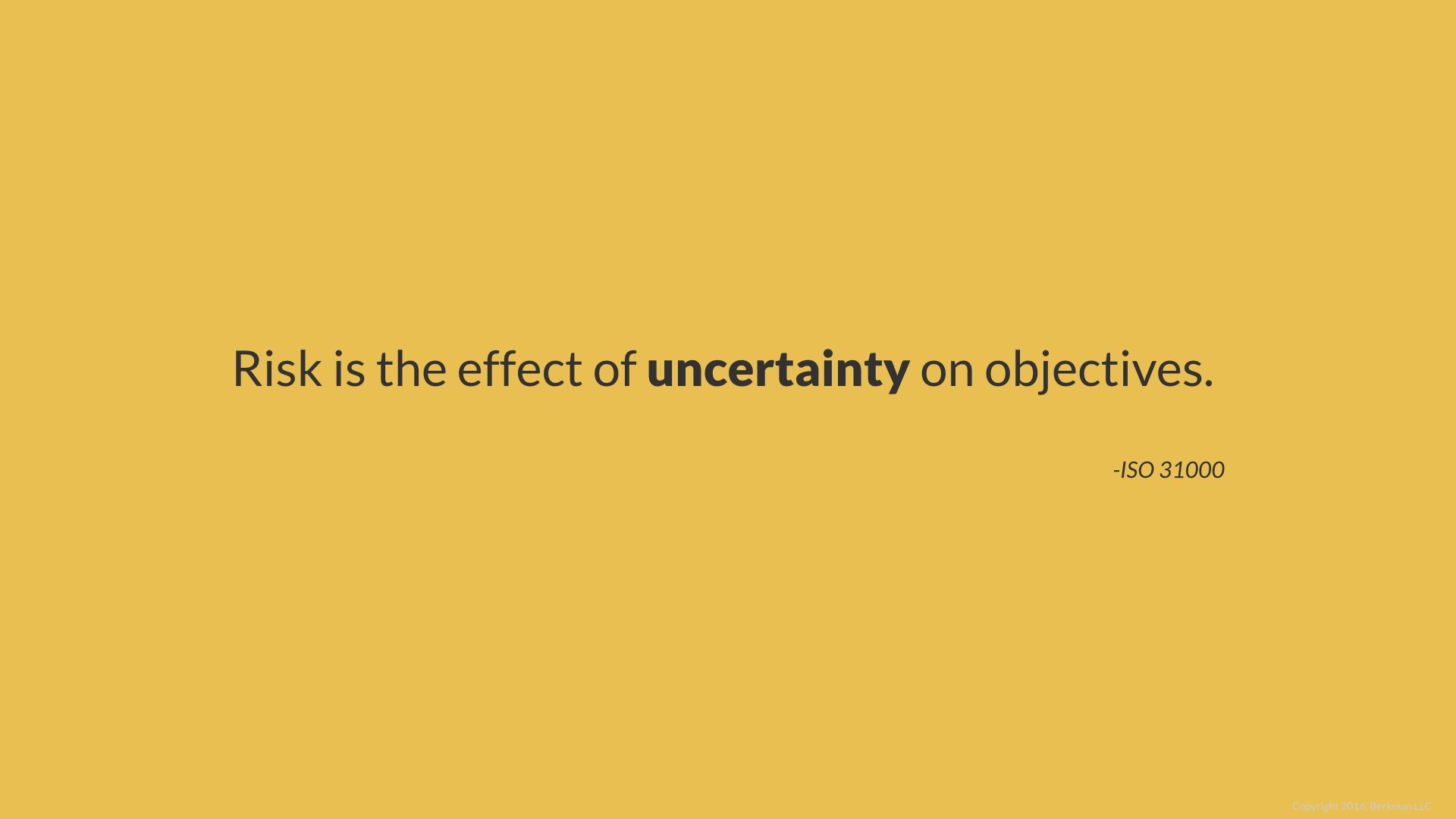What is risk?
Risk is a way to understand the relationship between our uncertainty and our objectives. Risk is “the effect of uncertainty on our objectives.”
Organizations have objectives. Financial objectives like revenue growth and profitability are common to most organizations, although they might also have non-financial objectives.
Let’s take the example of the lowly annual budget. An organization creates a budget to support its long term strategic objectives. Those objectives might include revenue growth or improving profit margins.
At the end of the year, the actual financial results deviate from original objectives, maybe the miss is large. The organization planned for fifteen percent (15%) revenue growth, but only achieved three percent (3%). Profitability, however, was better than the budget. Actual net profits were twenty-one percent (21%), rather than the budgeted profits of fourteen percent (14%).

The year’s financial performance brought both an unexpected shortfall and an unexpected gain. Tomorrow’s surprises are today’s uncertainties.
Risk is a way to understand the relationship between our uncertainty and our objectives.

In the budget example, risk helps us understand what might happen.
There are several concepts in this example that we will discuss throughout this course: uncertainty, objectives, as well as negative and positive risks.
